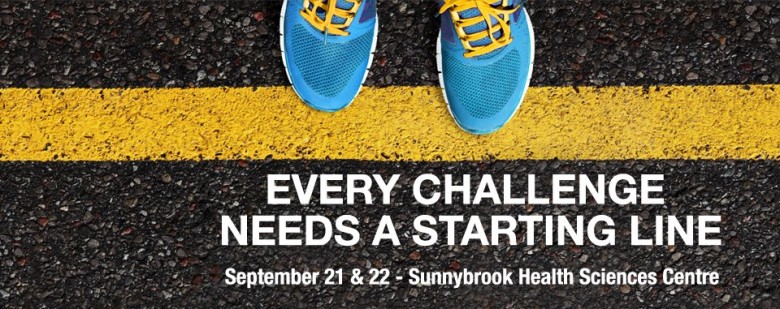In our current healthcare system if your child is physically injured you head straight to the hospital or clinic where they are treated by one of the many healthcare professionals on the road to recovery. That is not the case when it comes to mental health.
According to Dr. Anthony Levitt, a psychiatrist at Sunnybrook Hospital, “as many as two million Canadian youth struggle with a mental health or addictions problem, and yet only one in five will get specialized treatment.”
 Dr. Levitt is the co-chair of the Family Navigation Project. The project is a one-of-a-kind pilot service that will help youth and their families to navigate the complex mental health care system in Canada. In the current system, and until the Family Navigation Project is established, the family is left on its own to make sense of the approximately 400 treatment programs throughout Canada and the U.S.
Dr. Levitt is the co-chair of the Family Navigation Project. The project is a one-of-a-kind pilot service that will help youth and their families to navigate the complex mental health care system in Canada. In the current system, and until the Family Navigation Project is established, the family is left on its own to make sense of the approximately 400 treatment programs throughout Canada and the U.S.
On Saturday September 21st and Sunday September 22nd, RBC along with four Olympic athletes are teaming with Sunnybrook in support of this great project. The RBC Run for the Kids is the first, annual, two-day event that includes a 5 kilometre family fun run and 25 kilometre run in support of youth mental health at Sunnybrook Health Sciences Centre. Funds raised at the event will help establish the Family Navigation Project at Sunnybrook, a one-of-a-kind pilot service that will help youth and their families navigate the complex mental health care system in Canada. Supporting Olympians include: Jennifer Botterill, Heather Hamilton, Kevin Rempel and Greg Westlake.
I had a chance to speak with Dr. Levitt about the new project and about the inaugural run.
What sort of frustrations are families facing with the current health care system services?
The public system of mental health and addictions services is fragmented, and it is very hard for families to obtain the information that they need and to navigate the system on their own.
- It is challenging to locate specific and relevant information about services, providers, types of treatment, costs, eligibility requirements and wait-times. Partly because there are so many treatment philosophies and approaches, for some situations there is a cacophony of information that is very difficult to evaluate. For other situations, it may be difficult to obtain information about a range of options because providers have a tendency to navigate to “solutions” available within their own offering of services.
- Parents/families know that they need help, but may not know what form that help should take. They need information about options and assistance in evaluating and matching the options to their own context.
Parents/families know that they need help, but may not know what form that help should take.
- Parents/families from some ethnoracial backgrounds and cultures have different understandings of mental illness and addictions and different approaches to help-seeking which, for the most part, the current system is not organized to recognize or address.
- Children and youth with complex problems may need more than one kind of help, often from more than one service provider either concurrently or consecutively, and it is very difficult for families to ensure that these services are properly integrated and that care providers are talking to each other.
- In the many cases, established care pathways do not exist either because there is little professional agreement on what they would be, or where there is agreement the system of services falls short of being able to operationalize the pathway. This is especially true for more complex problems or co-morbid conditions. This absence of a care pathway can reflect a lack of continuity of care and/or insufficient duration of a treatment program for the particular problem.
- There tend to be waiting lists, often long, for many publicly-funded services. Parents will need help in understanding how wait lists work, whether a child or youth should be on multiple lists, and what alternatives exist. There is no simple or direct way of obtaining information about private care options or treatment services available in the U.S. Public directories seldom list these options.
- Information on websites and in public directories is often out of date; this information tends to be static insofar as it fails to provide detailed and compelling information about what treatment will actually look like.
- Parents/families may not understand how to help engage their youth in services or what their role can or should be. In more serious situations, problems may arise precipitously or they may develop slowly or even imperceptibly over a long time. Parents may have a sense that something is wrong, but in the absence of full knowledge or a clear pathway may waver or hesitate to take action. Parental suffering and distress is a frequent consequence, and yet all too often there is little support offered to parents. Sometimes restrictive interpretations of privacy and capacity and consent legislation will inadvertently get in the way of parents gaining the understanding they need to be optimally helpful to their adolescent or young adult children.
- There is even less offered in the way of support to siblings who can be impacted dramatically by their sibling’s struggles and the resulting impact on the family.
You had mentioned that there are over 400 services available, how will this service benefit them? (Is it online? Or an in-person service?)
About 70% of all mental health problems begin in childhood or adolescence.
We spent two years informally and formally speaking to families, youth, service providers, advocators, policy-makers and funders to determine how we could best address the needs of families and subsequently designed the Family Navigation Project (FNP) to respond to these needs. The service will operate primarily by telephone intake, and the degree of in-person involvement by the FNP and its Navigators will depend on the complexity of the problem. In all cases, we will provide families with:
- access to accurate information about the nature of the problem, treatment options and various providers
- guidance and support, so families have a consistent contact and ally who can act as a mentor or guide to help them answer critical questions about the process and support them throughout; moreover, by building a relationship with the family, Navigators will be able to better identify the best fit in services for that family
- meaningful participation in the child’s care, by keeping parents actively involved and provided with information and feedback from service providers as to the progress of their child’s care, and by helping parents to cope with the ongoing situation so they are better able to fulfill their role in the care process
- a tailored approach to a comprehensive range of treatment options, public and private, within Canada or outside, by providing families with nuanced information about particular treatment approaches or providers, and an understanding of whether or not this particular provider or approach is likely to be a good match for the family or child
- attention and support at critical junctures, such as inpatient admission, or when, after a myriad of efforts by everyone involved have failed, it is apparent that out-of-home residential treatment may be necessary
- peer and sibling support, by providing connections to community-based and/or in-house support groups so families have the opportunity to share experiences and act as both informational and support resources for each other
- an evidence base to make better informed treatment decisions by tracking outcomes and experiences of users of the FNP over time to create a database of reliably “collective wisdom”
What are some of the key factors families should take into consideration when seeking out assistance?
This really depends on where they are in the process. If they are just starting out on the journey and are unsure of the nature of the problem, they just need to start somewhere. If they have identified the problem, then they need to consider such things as cost of care, type of health care professionals involved, whether they are willing to let their child recover outside the home, the time commitment and involvement required by family members, and whether or not their child is willing to seek or accept treatment.
For all families, they should simply be aware that significant gaps and challenges do exist in the system, but it is ultimately the goal of the FNP to work with families to identify their needs and consequently, what they do need to consider in building the appropriate care plan.
We hear in the news that there is a growing concern of mental health issues with children. Are there signs that parents should be watching for to understand when to get professional assistance?
Parents should keep their eyes peeled for changes in routine behavior, beyond what is normally expected of adolescents. Has your child suddenly changed peer groups? Are they no longer participating or interested in activities they used to enjoy? Are they still attending school, or have their grades dropped? Have they become withdrawn, apathetic or overly reactive? Changes in appetite or sleep habits? These are often the type of signs that something may be amiss.
Parents should keep their eyes peeled for changes in routine behavior, beyond what is normally expected of adolescents.
What are some of the current stats on mental health or addiction in Canada?
- 20% of youth are struggling with mental health or addiction, about 2 million in Canada, and only 1 in 5 will get the help they need
- About 70% of all mental health problems begin in childhood or adolescence
- Youth suicide rate in Canada is the third highest in the industrialized world
- Young people aged 15-24 are more likely to experience mental illness and/or substance use disorders than any other age group
- General population studies have shown that the first symptoms and onset of major mental health disorders develop in adolescence and early adulthood, but that individuals in this age group are the least likely to access mental health services
- Improving a child’s mental health from ‘moderate’ to ‘high’ has been found to result in lifetime savings of $140,000 per child
The RBC Run For Kids is a great initiative to help raise some needed public funding, Olympians are also supporting this cause. Why these particular four athletes?
These are individuals who have had to overcome adversity to get where they are. To achieve their level of sporting excellence they had to have guidance and navigation through their lives and have benefitted from families, friends and coaches “getting in the boat” with them and supporting them. These are the important features of what we plan for the FNP – guiding people through the various pathways to health, getting in the boat with families and being committed to helping them find the best care at the right time.
So tell us, what has been your experience with the current health care system?
For more information visit the website at RBC Run For The Kids
Thank you Dr. Levitt for this very informative interview! Now, let’s lace up!
This post is not sponsored, nor was I compensated.


Leave a Reply